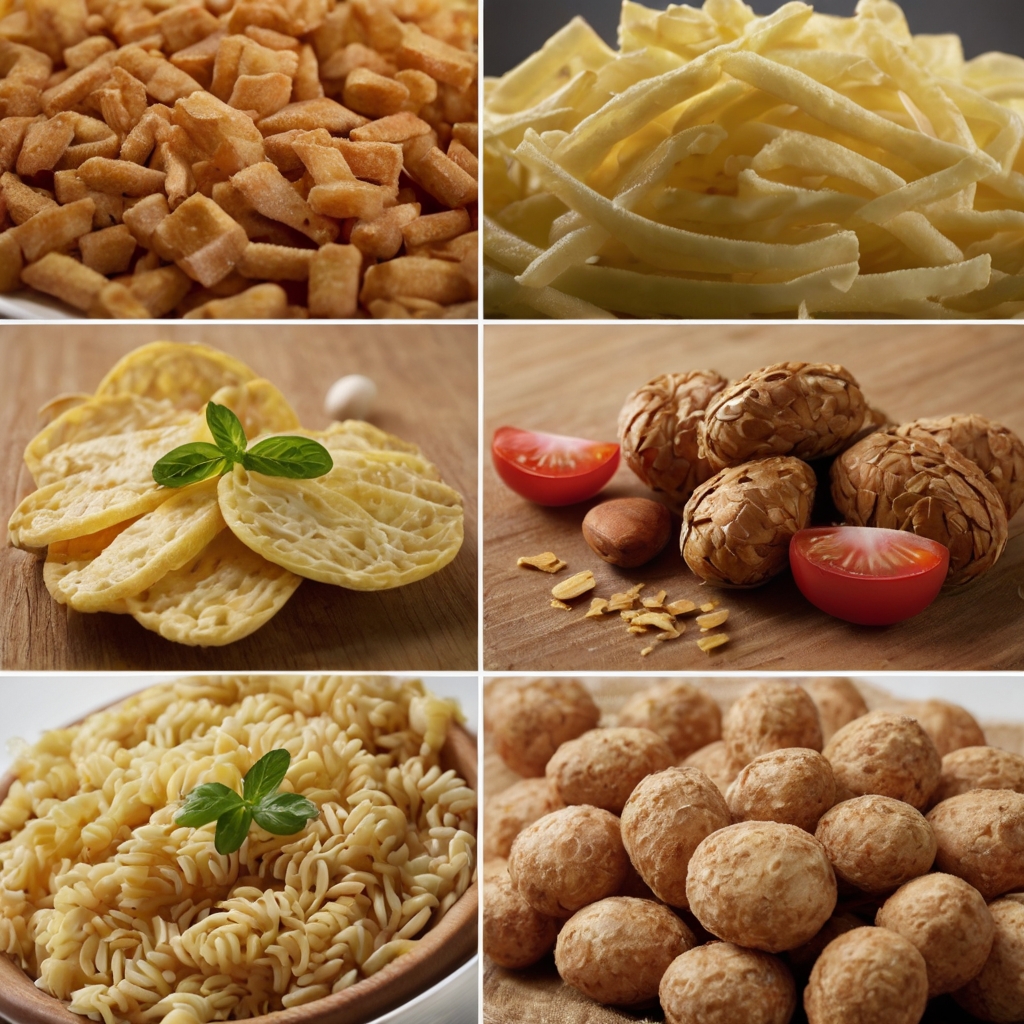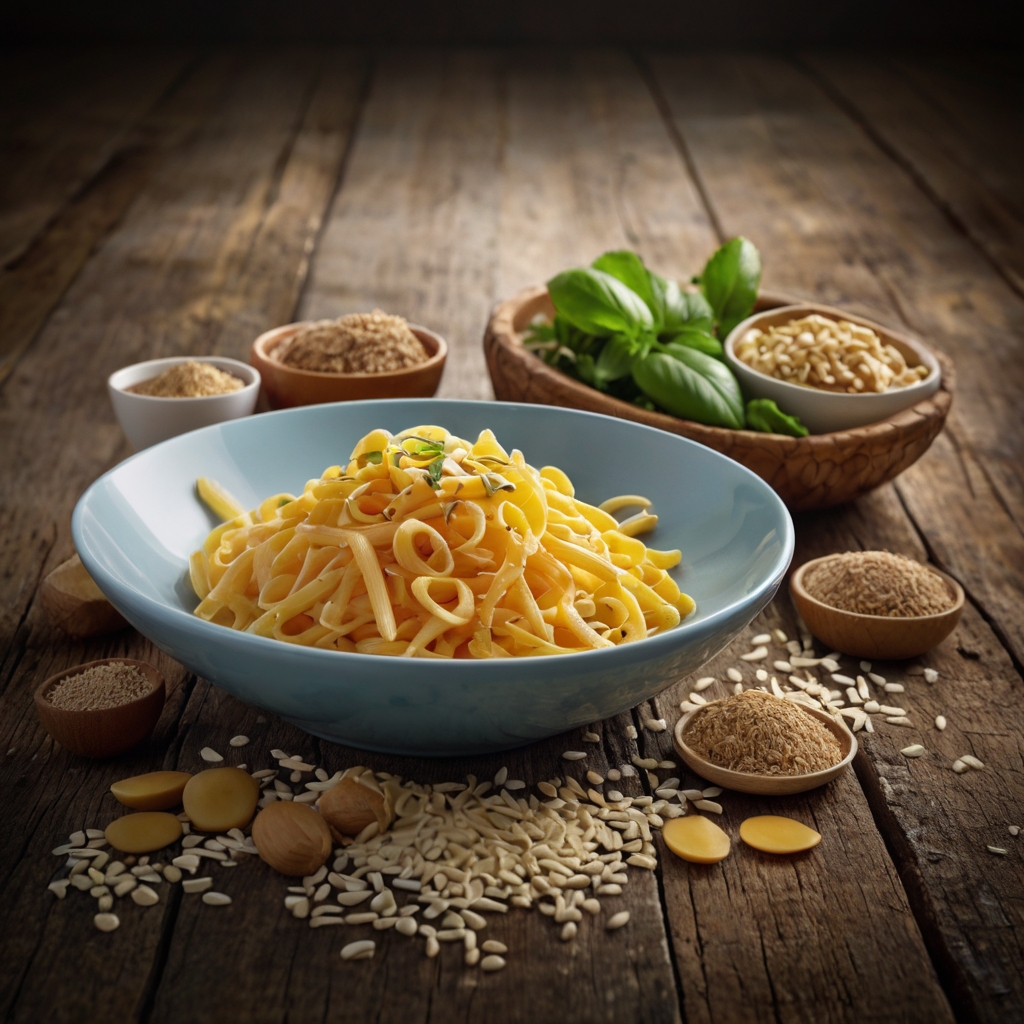Poland Foods
Polish cuisine stands as one of Europe’s most criminally underrated culinary traditions. Traditional Polish food brings together meats, bread, mushrooms, potatoes, and pickled ingredients that create a hearty and satisfying dining experience.
The sort of thing I love about popular Polish foods is their unique combination of flavors that families have passed down through generations. Pierogi leads the pack as Poland’s favorite dish, while żurek has earned its place as a culinary favorite. Polish people prove their love for sweets when they devour an amazing 100 million pączki (Polish donuts) nationwide during Fat Thursday.
Polish food culture tells the story of the country’s rich history and seasonal ingredients. The most beloved Polish dishes need time and patience – to name just one example, see bigos (hunter’s stew) that takes days to reach perfection. Anyone wondering about Polish food will learn about everything from daily meals to festive specialties during their culinary adventures.

The Roots of Polish Cuisine
Polish cuisine tells a story that spans centuries of rich history. The Middle Ages saw the birth of Polish food traditions built on farm produce, wild game, forest fruits, and plenty of spices. Foods in Poland stand out because the country’s geography, politics, and neighboring cultures have shaped them throughout its eventful history.
A brief history of Polish food traditions
Polish cuisine started with simple, filling dishes made from local ingredients. Medieval Polish cooking became famous for its generous use of meat (mostly pork and game), grain crops, and nature’s gifts like mushrooms and berries. On top of that, it earned recognition for its unique flavors created by liberal use of pepper, nutmeg, and juniper.
Stanisław Czerniecki’s “Compendium Ferculorum,” the first Polish cookbook published in 1682, shows how Polish food embraced Eastern flavors. Religious practices played a big role in shaping eating habits. Poland’s adoption of Christianity in 996 led to Catholic fasting rules that promoted vegetarian dishes and fish consumption. This created two versions of many recipes: ones with meat and ones without.
Queen Bona Sforza’s arrival from Italy in 1518 marked a turning point in Polish cooking. She brought Italian chefs who introduced new vegetables to Poland. Today, Poles still call certain vegetable combinations włoszczyzna or “Italian stuff” – a name that reminds us of this food revolution.
Influences from neighboring countries
Poland’s central location in Europe naturally led its traditional Polish food to pick up cooking styles from nearby countries. The country became a mixing pot of Western and Eastern food traditions thanks to its position along European trade routes.
Polish cuisine shows clear influences from:
- German, Jewish, Lithuanian, and Hungarian cooking traditions
- Russian, Belarusian, and Ukrainian culinary elements
- French cuisine, particularly in the 18th and 19th centuries
- Turkish, Tatar, and Armenian food traditions
Political changes and occupation brought more outside influences to Polish cooking. The division of Poland by Russia, Prussia, and Austria left clear marks on regional cooking styles. Whatever foreign influences came their way, Poles made these borrowed cooking ideas their own by using local ingredients and techniques.
Why Polish food is hearty and seasonal
Popular foods in Poland are hearty because of the country’s climate and farming practices. Long, cold winters meant people needed preserved foods and high-calorie meals to survive.
Root vegetables like potatoes, cabbage, and turnips became everyday foods because people could store them through winter. People used methods like pickling, fermenting, and drying to keep food available year-round before modern refrigeration existed.
Poland’s natural features, especially its vast forests, have left their mark on the national diet. Forest fruits and wild mushrooms remain vital to Poland food culture today. The cuisine developed unique flavors: slightly sour from fermented foods, moderately spicy from horseradish and pepper, and sometimes sweet-tart from added fruits.
Farming is a vital part of Polish society and has made the cuisine what it is today. Foods from Poland use plenty of dairy, vegetables, and pork – all easy to get from local farmers. This mix of farm abundance and seasonal limits created a food culture that celebrates seasonal eating while making sure people had enough to eat during harsh winters.

Top 10 Traditional Polish Dishes to Try
A taste of authentic Poland foods will amaze any food lover. These ten traditional dishes showcase a mixture of flavors that define Poland food culture and give visitors a real taste of this Eastern European nation’s food heritage.
1. Pierogi – Poland’s iconic dumplings
These crescent-shaped dumplings are the crown jewel of traditional Polish food. You can enjoy pierogi as appetizers, main courses, or desserts based on their fillings. Pierogi ruskie, the most popular version, comes with farmer’s cheese and potatoes. Other favorites include cabbage and mushroom, minced meat, and fruit varieties. The traditional way serves them boiled with fried onions or skwarki (pork greaves). Remember – never call them “pierogis” since the word is already plural in Polish!
2. Bigos – The hunter’s stew
Many people call bigos the Poland national dish, and with good reason too. This rich stew brings together sauerkraut, fresh cabbage, various meats (including kielbasa sausage and pork), mushrooms, and spices. The flavors blend better over time, which makes it perfect for winter gatherings. Hunters and nobles loved this dish throughout history. Today, each Polish family has its own special recipe.
3. Zurek – Sour rye soup with sausage
Fermented rye flour (zakwas) gives this unique soup its tangy taste. Real żurek comes with white kiełbasa sausage, hard-boiled eggs, and potatoes. The result is a filling dish packed with flavor. Polish restaurants serve żurek all year, but it shines during Easter celebrations. The soup shows Poland’s skill with fermentation and offers both probiotics and an amazing umami taste.
4. Kotlet Schabowy – Breaded pork cutlet
Kotlet schabowy might look like Viennese schnitzel, but it’s uniquely Polish. This golden-fried, breaded pork cutlet pairs perfectly with creamy mashed potatoes and beetroot salad or cucumber salad (mizeria). Polish kitchens started making this comfort food in the 19th century. It became a favorite during Communist times when pork was everywhere.
5. Gołąbki – Stuffed cabbage rolls
Polish people lovingly call these “little pigeons.” Gołąbki are cabbage leaves wrapped around minced meat, rice, and aromatics, then baked in tomato or mushroom sauce until tender. These bundles are a must-have at Polish family gatherings. While vegetarian versions exist now, the classic meat-and-rice filling remains the favorite.
6. Placki Ziemniaczane – Potato pancakes
These crispy treats show Polish creativity at its best. Made from grated potatoes, eggs, flour, and often onions, placki ziemniaczane taste great with sour cream, sugar, applesauce, or mushroom sauce. You can eat them any time of day. Some regions top them with goulash (placki po węgiersku) for a bigger meal. They became popular as a cheap bread alternative during tough times.
7. Barszcz – Beetroot soup
This bright red soup proves Poland’s love for beets. Christmas Eve tables always feature clear barszcz with tiny mushroom dumplings called uszka. The soup balances sweetness with a gentle tang. Unlike Ukrainian borscht, Polish barszcz comes as a clear broth without vegetables or meat.
8. Kielbasa – Polish sausage
“Kielbasa” means “sausage” in Polish and covers dozens of types – dried, fresh, smoked, and unsmoked. Polish sausages use pork, beef, turkey, lamb, or chicken with special spice blends that usually include garlic and marjoram. You’ll find kielbasa in soups, stews, or next to sauerkraut. The options seem endless, from myśliwska (hunter’s sausage) to krakowska (Krakow-style) to the fresh white sausage eaten at Easter.
9. Paczki – Polish donuts
These pastries are nowhere near ordinary donuts. Their rich, brioche-style dough and generous fillings exceed expectations. Rose hip, plum jam, or custard stuffing makes them special. Fat Thursday sees Poles eat about 100 million pączki nationwide. Local legend says skipping your pączek that day brings bad luck all year.
10. Makowiec – Poppy seed roll
This sweet bread shows off Polish baking skills. Makowiec wraps yeast dough around dense poppy seed filling mixed with honey, nuts, and dried fruits. It appears at Christmas and Easter celebrations as a symbol of good fortune. Making it takes work – grinding poppy seeds and preparing dough that creates beautiful spirals when cut. Polish families pass down their makowiec recipes through generations.
Polish Food by Category: From Starters to Desserts
Poland foods cover a rich variety of dishes in every course category. A complete Polish dining experience ranges from opening soups to sweet desserts at the end.
Soups and starters: Rosol, Flaki, Chlodnik
Polish cuisine really shines through its amazing soup varieties. Rosół, a clear chicken broth with noodles and vegetables, is the foundation of many Polish meals that shows up at Sunday family dinners. This soul-warming soup needs hours of simmering to develop its rich flavor and comes with homemade noodles or dumplings.
Food adventurers can try Flaki, a unique tripe soup with marjoram and spices. King Władysław II Jagiełło enjoyed this dish back in the 14th century, and it’s still a wedding celebration favorite that pairs well with a shot of chilled vodka.
Chłodnik brings a cool summer twist – a cold soup that blends beetroot, cucumber, dill, and buttermilk or kefir into its signature pink color. This Lithuanian-inspired dish strikes a perfect balance between sweet beet sugars and tangy fermented dairy.
Main courses: Gulasz, Zrazy, Kopytka
Polish goulash (Gulasz) features tender meat in a savory sauce with bell peppers, onions, and paprika. Polish versions come with potato pancakes or buckwheat kasha, unlike their Hungarian cousins.
Zrazy zawijane showcases Polish cooking at its finest – thin beef filets wrapped around bacon, mushrooms, pickles, and onions, slow-cooked in rich sauce. Noble households created this dish, but now you’ll find it on tables everywhere in Poland.
Kopytka (“little hooves”) are potato dumplings like Italian gnocchi, made from mashed potatoes, eggs, and flour. These hearty dumplings taste great with meat dishes or mushroom gravy.
Side dishes: Mizeria, Salatka Jarzynowa
Mizeria balances heavy main courses with fresh cucumbers in sour cream, dill, vinegar, and sometimes chives. This cool salad goes perfectly with breaded pork cutlets (kotlet schabowy).
Sałatka Jarzynowa stands out at Polish celebrations – a creamy mix of potatoes, carrots, peas, eggs, and pickles in mayonnaise. This Polish favorite (similar to Russian Olivier salad) shows up at every festive gathering.
Desserts: Sernik, Wuzetka, Babka
Famous foods in Poland include amazing desserts. Sernik (Polish cheesecake) is different from American versions because it uses twaróg (farmer’s cheese) for its unique texture and flavor. This sweet treat goes back to the 17th century and King Jan III Sobieski’s victory at the Battle of Vienna.
Wuzetka, a chocolate cream pie layered with whipped cream and marmalade, came from socialist-era food shortages and got its name from Warsaw’s East-West Route (W-Z). Babka (meaning “grandmother” because of its skirt-like shape) is a must-have Easter tradition – a bundt-shaped yeast cake that ranges from lemony to chocolate-marbled versions.
Seasonal and Holiday Foods in Poland
Polish holidays and seasonal celebrations shape the country’s culinary calendar. Each celebration brings its own foods in Poland that hold deep cultural meaning and showcase traditional cooking methods passed down through generations.
Christmas Eve dishes: Barszcz with uszka, carp
The Christmas Eve dinner (Wigilia) starts at the time the first star shines in the sky. Families serve exactly 12 dishes that represent the 12 apostles. Family members break the Christmas wafers (opłatek) together and share their wishes before anyone takes a bite. The feast begins with barszcz czerwony (red borscht), a special beetroot soup that needs a sour base (zakwas). Cooks prepare this base 4-5 days ahead. The Christmas version comes with tiny dumplings called uszka (“little ears”) stuffed with dried porcini mushrooms and fried onion.
A meatless feast wouldn’t be complete without carp as its centerpiece. Sauerkraut with dried mushrooms or vegetable salad usually accompanies this special fish. Some Polish families still keep their live carp swimming in the bathtub before Christmas. People often save a carp scale in their wallet because they believe it brings money and good fortune throughout the year.
Easter favorites: White kielbasa, babka
Easter brings biała kiełbasa (white sausage) to Polish tables. This unsmoked fresh sausage bursts with flavors of garlic, marjoram, and black pepper. Polish families love to bake it with sliced onions and apples, then add mustard, honey, and marjoram. Many households make this sausage just for Easter and serve it in Biały Barszcz (white borscht).
The Easter babka (bundt cake) stands as a cherished holiday tradition. Polish homes fill with its sweet aroma before Easter, and families proudly place it in baskets blessed on Holy Saturday. Old superstitions still live on – many bakers won’t let anyone enter their kitchen while the babka bakes, fearing it might collapse.
Fat Thursday traditions: Paczki and more
Polish people go crazy for pączki on the Thursday before Lent (Tłusty Czwartek). The nation devours an incredible 100 million of these Polish donuts in just one day. Local wisdom warns that skipping pączki on Fat Thursday leads to “an empty barn and fields destroyed by mice”. This sweet tradition helps use up fats and sweets before Lent begins.
Faworki (angel wings) share the spotlight on Fat Thursday tables. These delicate, crispy pastry ribbons come dusted with powdered sugar. The light and airy faworki balance out the richer pączki as people enjoy their last treats before Lent.
Where and How to Try Authentic Polish Food
A taste of authentic Polish cuisine teaches you about the country’s culture that goes way beyond the reach and influence of just good food. Polish food lovers can enjoy traditional Polish food at government-supported cafeterias or bustling street food stalls.
Milk bars and local restaurants
Bar mleczny (milk bars) are the foundations of Polish culinary experiences. These simple cafeterias started during communist rule as government-supported meal spots for workers. The Polish government still helps these places keep their prices low—a complete meal costs about USD 5.00. These spots serve authentic foods in Poland and pack plenty of cultural history.
You won’t find English menus at milk bars. The best approach is to join the line, point to your choices using “to” (this) and “i” (and), pay first, and listen for your order. Upscale dining spots like Warsaw’s Soul Kitchen have become famous for their steak tartare. Places like Stary Dom serve refined versions of popular foods in Poland such as venison with Silesian dumplings.
Street food and markets
Polish street food has transformed in major cities. Zapiekanka—an open-faced sandwich on baguette topped with mushrooms, cheese, and extras—stands as the most beloved street food that ever spread across Poland. The must-try list includes kielbasa (Polish sausage), obwarzanek (ring-shaped bread like bagels), and oscypek (smoked sheep cheese) usually paired with cranberry jam.
Cooking at home: Tips and ingredients
Making traditional Polish food at home needs just a few basic ingredients you can find in regular supermarkets. Butter is crucial—cooks use it to fry everything from kotlets to placki ziemniaczane. Potatoes, beets, cabbage, and mushrooms create the base for many Polish dishes.
Regular ricotta works well as a substitute for twaróg (farmer’s cheese). Authentic Polish cooking requires different meats—especially pork. Sour cream plays a key role in dishes like mizeria (cucumber salad).
Some final words
Polish cuisine stands among Europe’s finest culinary treasures. It brings together hearty flavors that evolved through centuries of cultural exchange, seasonal changes, and preservation methods. This piece explores an array of flavors that define Poland’s food traditions – from iconic pierogi and hearty bigos to delicate pączki and comforting żurek.
Polish cooking shows remarkable versatility in every meal category. Soups bring warmth during harsh winters, while refreshing options like chłodnik cool you down in summer. Main courses highlight Poland’s love for satisfying meals that get better with time as flavors blend together. The desserts showcase both religious traditions and seasonal celebrations that mark Poland’s calendar year.
Polish cuisine becomes even more special when you have its connection to cultural identity and national history. Each dish tells a story – from Queen Bona Sforza’s vegetable revolution to the resourcefulness people developed during tough times. Polish food means more than just sustenance – it represents cultural resilience and family bonds.
People who want to taste authentic Polish flavors have many options. They can visit humble milk bars that serve budget-friendly classics or upscale restaurants that reimagine traditional recipes. You can also recreate these dishes at home with just a few staple ingredients from most supermarkets.
Polish cuisine rewards adventurous eaters with complex flavor profiles. The taste combines slight sourness from fermentation, moderate spiciness from seasonings, and occasional sweet-tart notes from fruit additions. This balance creates unique dishes you won’t find anywhere else in Europe, despite influences from neighboring countries.
The true joy of Polish food lies in knowing how to satisfy both body and soul through time-tested recipes that value flavor, seasonality, and tradition. These dishes give you a genuine taste of Poland’s culinary heritage – whether you enjoy them in Warsaw’s bustling markets or make them in your kitchen. They remain hearty, distinctive, and worth learning about.
Here are some FAQs about Poland foods:
What food is famous in Poland?
Poland foods are renowned for their hearty and comforting nature, with pierogi being the most internationally recognized dish. These dumplings are one of the most popular foods in Poland, stuffed with various fillings like potatoes, cheese, or meat. Other famous foods in Poland include bigos (hunter’s stew) and kielbasa sausage, which showcase traditional polish food at its best.
What is Poland’s classic food?
When discussing foods from poland, żurek (sour rye soup) stands out as a true classic that represents traditional polish food. This iconic soup, often served in a bread bowl, is one of the most popular foods in poland during Easter celebrations. Another staple is kotlet schabowy, a breaded pork cutlet similar to schnitzel that appears regularly in poland foods cuisine.
What is the most delicious Polish dish?
While tastes vary, many consider pierogi ruskie (filled with potato and cheese) the crown jewel among foods in poland. These famous foods in poland offer the perfect balance of soft dough and flavorful filling that defines traditional polish food. For meat lovers, golabki (cabbage rolls) often top the list of most delicious foods from poland.
What is the main meat eaten in Poland?
Pork dominates as the primary meat in poland foods, appearing in everything from kielbasa to schnitzel. Among popular foods in poland, poultry like chicken and duck also feature prominently, especially in traditional polish food preparations. Wild game meats occasionally appear in famous foods in poland, particularly in rural areas and seasonal dishes.
What is Poland best known for?
Beyond its rich history, Poland is celebrated worldwide for its foods from poland like pierogi and kielbasa that have become global ambassadors of traditional polish food. The country’s famous foods in poland also include its variety of breads and pastries that showcase centuries-old baking traditions. Vodka production and mushroom foraging are other culinary highlights among popular foods in poland.
What is Polish street food?
Zapiekanka, an open-faced baguette with mushrooms and cheese, reigns supreme among street foods in poland. Other popular foods in poland sold on streets include kielbasa sandwiches and oscypek (smoked sheep cheese). These famous foods in poland offer quick, flavorful bites that represent traditional polish food culture in casual settings.
What are traditional Polish sweets?
Pączki (filled doughnuts) stand out as the most beloved among sweet foods from poland, especially on Fat Thursday. Other traditional polish food desserts include sernik (cheesecake) and makowiec (poppy seed roll), which are popular foods in poland during holidays. These famous foods in poland showcase the country’s love for rich, satisfying desserts.




